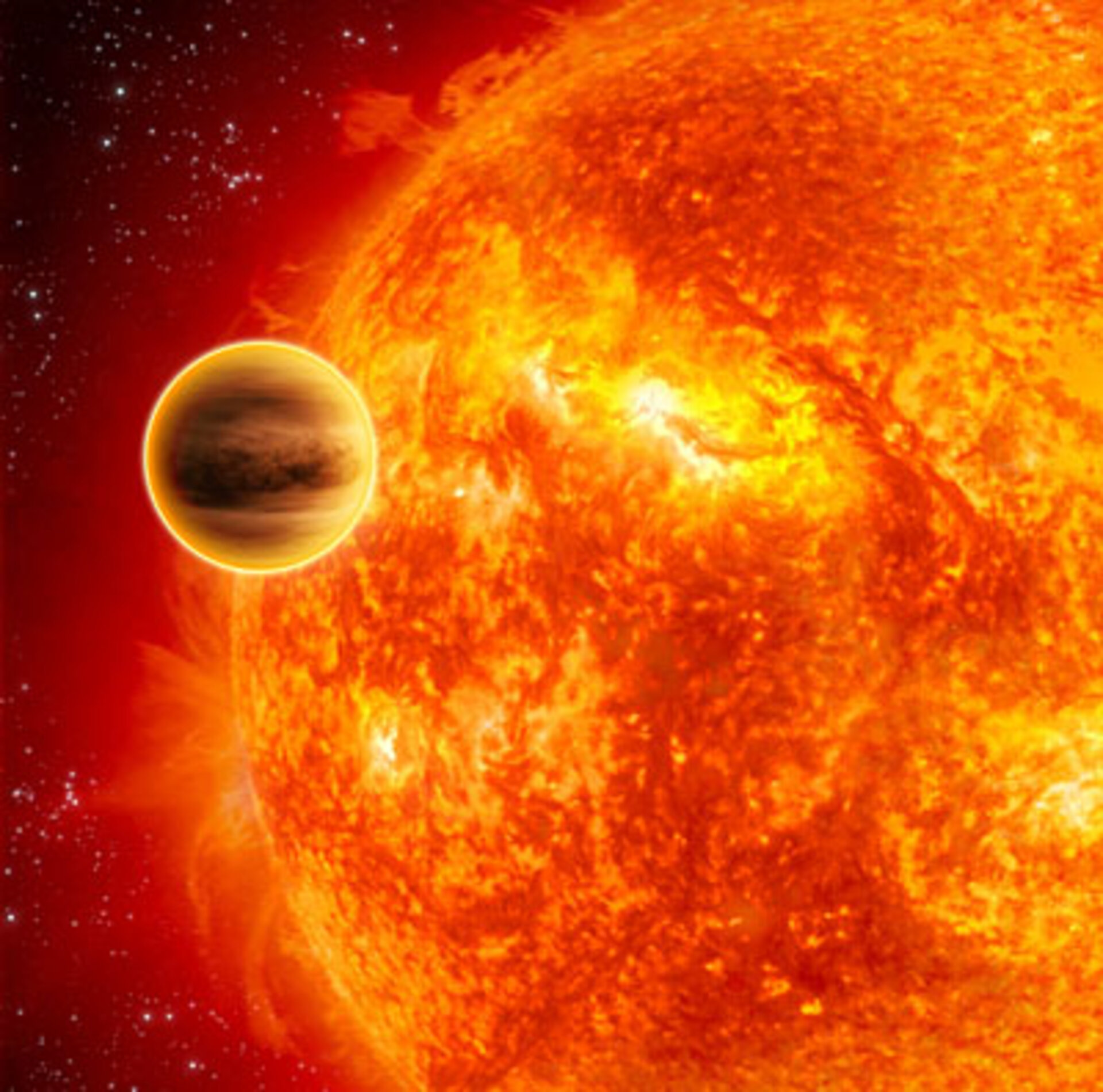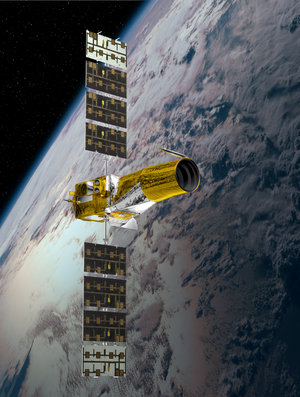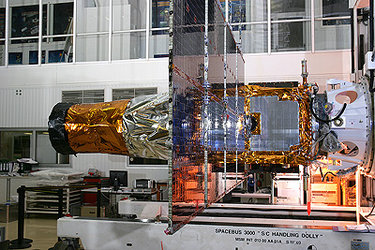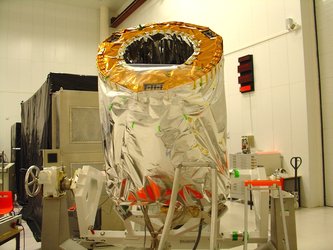Water, water everywhere - on an extrasolar planet
Scientists report the first conclusive discovery of the presence of water vapour in the atmosphere of a planet beyond our Solar System.
The discovery was made by analysing the transit of the gas giant HD 189733b across its star in the infrared.
Giovanna Tinetti, ESA fellow at the Institute d’Astrophysique de Paris, and colleagues from around the world, used data from NASA’s Spitzer Space Telescope. They targeted planet HD 189733b, 63 light-years away, in the constellation Vulpecula.
The planet was discovered in 2005 as it dimmed the light of its parent star by some three percent when transiting in front of it. Using Spitzer, Tinetti and the team observed the star, which is slightly fainter than the Sun. They watched its starlight dim at two infrared bands (3.6 and 5.8 micrometres).
Had the planet been a rocky body devoid of atmosphere, both these bands and a third one (8 micrometres), recently measured by a team at Harvard, would have shown the same behaviour.
Instead, as the planet’s tenuous outer atmosphere slipped across the face of the star, the starlight absorbed showed a different, distinctive pattern. The atmosphere absorbed less infrared radiation at 3.6 micrometres than at the other two wavelengths.
“Water is the only molecule that can explain that behaviour,” says Tinetti.
The presence of water vapour does not necessarily make it a good candidate in the search for planets that harbour life. “This is a far from habitable world,” she adds.
Instead of a rocky world like Earth, HD 189733b is large, about 1.15 times the mass of Jupiter. Located just 4.5 million km from its star, it orbits it in 2.2 days. In comparison, Earth is 150 million km from the Sun; even Mercury, the innermost planet, is 70 million km away.

Astronomers classify such worlds as ‘hot Jupiters’. These planets tend to have extensive atmospheres because heat from the nearby star gives them energy to expand. HD 189733b is no exception; its diameter is 1.25 times that of Jupiter.
HD 189733b’s atmospheric temperature is about 1000 Kelvin (a little more than 700°C) or higher, implying that the significant amounts of water vapour in the atmosphere cannot condense to fall as rain or form clouds. The temperature would have to be about five times lower to form clouds of water vapour or rain.
That does not mean the atmosphere is sedate, however. The planet is gripped so tightly by the gravity of its star that one hemisphere constantly faces the star, heating the planet only on one side. This probably generates fierce winds sweeping from the day-side to the night-side. “There are a thousand things to learn about these planets,” says Tinetti.
Although, being a gas giant, the planet is an unlikely candidate in the search for life, these results increase hopes for the detection of water on other rocky planets, which astronomers hope to discover in the near future.
France‘s COROT mission, in which ESA participates, is expected to detect dozens of transiting gas giants, and has been working so well that it may also detect nearly Earth-sized worlds.
Atmospheres of rocky planets should be much more tenuous, so they will have to wait for future space telescopes, such as the James Webb Space Telescope, before they can be investigated.
The mission Darwin is expected to be proposed to ESA under the Cosmic Vision Programme, with a possible launch date sometime after 2018. A constellation of four spacecraft, Darwin’s goal would be to find and analyse atmospheres of Earth-sized planets, looking for telltale signs of water vapour and other gases that might betray life on those worlds.
Notes for editors:
The findings appear in the 12 July 2007 issue of the scientific journal Nature. The original paper, titled ‘Water vapour in the atmosphere of a transiting extrasolar planet’, is by G. Tinetti, A. Vidal-Madjar, M-C. Liang, J-P. Beaulieu, Y.L. Yung, S. Carey, R. Barber, J. Tennyson, I. Ribas, N. Allard, G. Ballester, D.K. Sing, F. Selsis.
NASA's Jet Propulsion Laboratory (JPL), Pasadena, California, manages the Spitzer Space Telescope for NASA's Science Mission Directorate, Washington. Science operations are conducted at the Spitzer Science Center at the California Institute of Technology (Caltech), also in Pasadena. Caltech manages JPL for NASA.
For more information:
Giovanna Tinetti, former ESA fellow at Institute d’Astrophysique de Paris, France; currently at University College London, UK
Email: Giovanna @ apl.ucl.ac.uk
Jean-Philippe Beaulieu, Institute d’Astrophysique de Paris, France
Email: Beaulieu @ iap.fr
Jonathan Tennyson, University College London, UK
Email: J.Tennyson @ ucl.ac.uk
Fabio Favata, ESA Coordinator for Astronomy and Fundamental Physics missions
Email: Fabio.Favata @ esa.int










